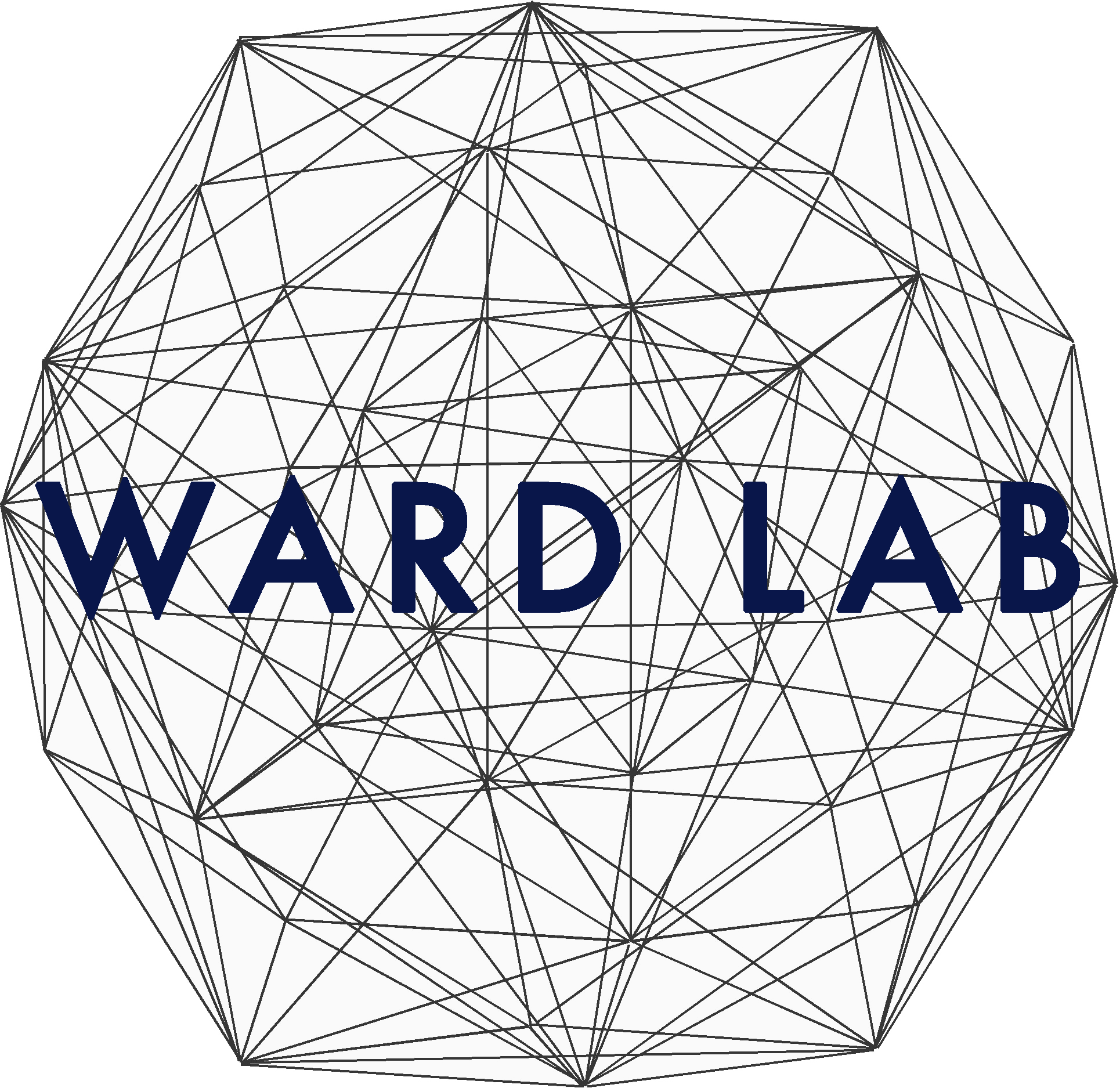Software
POC
POC (Preferred Orientation of Crystals) is an updated software derived from reflection mode of two-dimensional X-ray diffraction (2D-XRD) and is used for the determination of texture analysis, especially for thin film analysis. Initially, crystallographic unit cell parameters--a, b, c, alpha, beta, gamma-- of the crystal must be given. Experimentally measured angles, theta1, of incident X-ray beam angle and delta, of preferred orientation in 2D-XRD are measured for each observed (h2k2l2) reflection. With more miller indices with different azimuthal angles, the interplanar dihedral angle will be more accurate for the orientation calculation.
GRACE
GRACE (Geometric Real-space Analysis of Crystal Epitaxy) was developed through a collaboration between Lian Yu of the Eli Lilly Co. and the Ward research group, with support from the National Science Foundation (CTS-0233696). GRACE, version 4.1 for Windows. Last updated 07-16-03. This package includes the GRACE module and an additional module called Crystal Tools. GRACE is useful for analyzing the epitaxial relationship between a crystalline substrate and specific contacting planes of a crystalline overlayer. Output from GRACE is in the form of an epitaxy score which can be used to predict or explain instances of epitaxy. Contained within GRACE are crystallographic databases of mineral substrates, Langmuir-Blodgett monolayer substrates, and organic molecules. Crystal Tools is useful for the following tasks: Determining 2D lattice parameters for specific crystal planes Calculating unit cell volumes Finding d-spacing distances for specific planes Determining the corresponding Bragg reflection angles from calculated d-spacings and user defined wavelengths. Please read the installation notes below before attempting to install this software. Note GRACE's interface is relatively self-explanatory but a comprehensive user manual will be released shortly. Please check this site again to download the user manual. Click here to read the Installation notes.
Download GRACE (Geometric Real-space Analysis of Crystal Epitaxy)
CorralCalc
CorralCalc is a program that simulates 2-D aggregation within circular confines. The user can enter the corral radius, surface diffusion coefficient, refilling flux, and crystal density. The growth of the aggregate is recorded as a function of time. This growth is dependent on the proximity of the aggregate to the wall and the concentration gradient between the edge of the growing aggregate and the wall. Nucleation is allowed to occur at radial positions incremented by 1 nm. Based on aggregate size at the end of the run, the program identifies the most probable annulus for nucleation. For more information see:"Nanoconfined electrochemical nucleation of crystalline molecular monolayers on graphite substrates," D. E. Hooks, C. M. Yip and M. D. Ward, Journal of Physical Chemistry B, 102(49), 9958 (1998).
Contact Angle
Contact Angle is a program used to calculate contact angles from quartz crystal microbalance frequency changes. (Ref: Z. Lin and M. D. Ward, "Determination of Contact Angles and Surface Tensions with the Quartz Crystal Microbalance," Anal. Chem., 1996, 68, 1285.) Input parameters include frequency change (delta f), number of drops of 2 uL each, constant C determined separately by the procedure described in the paper, and an initial guess of the contact angle. The program was written in FORTRAN 77 and run on an HP workstation using UNIX system V. The command sequence for using this program is as follows: f77 contact.f; rn a.out contact; contact. All parameters can be entered at this time and the resulting contact angle will be given. The program will then prompt you to either input a second set of parameters or quit. To facilitate copying, This file have been given a .txt extension; click to view the code, paste into a new file and rename as contact.
Download Contact Angle
SpmCon95
SpmCon95 is a stand-alone program written for Digital Instruments Nanoscope force curve files for doing force curve analysis. It can measure areas and vertical heights, browse multiple force curves, overlay multiple force curves, and shift force curves. This version allows for tab delimited files and gets rid of the integration problems encountered by some users. As noted on Digital Instruments SPM mailing list on 9/9/96, the Windows 95 version adds an improved interface and the ability to add comments to force curves, copy force curves to the clipboard for pasting into other files, make and record measurements on force curves, integrate them, calculate slopes, and more. SPMCON95.EXE is an executable that will produce several others when run. Of these, you need to run the setup file to get going. Click here for the operating manual for this software.
Download SpmCon95
Image Macro
This is a macro written for NIH-Image. It will import a raw Digital Instruments Nanoscope file, flip it vertically and then export it as a tiff file (appending tiff to the filename). The orginal DI files need to be split using their software, but then you can click and flip for use on the Mac.
Download Contact Angle
Diamond
Diamond is an MS Windows application for the exploration and drawing of crystal and molecular structures. It integrates a multitude of functions, which overcome the work with crystal structure data - in research and education as well as for publications and presentations. Diamond offers an extensive set of functions that let you easily model any arbitrary portion of a crystal structure from a basic set of structural parameters (cell, space group, atomic positions). As a state-of-the-art Windows application, it uses object-oriented menus, toolbars, and context-sensitive local popup-menus. The Multiple Document Interface (MDI) allows "simultaneous" handling of multiple documents. And every document may hold more than one structure parameter set, and every structure parameter set may have more than one structure picture.
EpiCalc is a computationally efficient geometric lattice misfit algorithm that enables reliable and rapid prediction of the mode of epitaxy (i.e. incommensurism, commensurism, or coincidence) and the optimum azimuthal orientation for a given overlayer-substrate combination. Th algorithm requires only the lattice parameters of the overlay and substrate as input. For more information see: "Epitaxial Interactions between Organic Overlayers and Ordered Substrates," A. C. Hillier and M. D. Ward, Phys. Rev. B, 1996, 54, 14037.
